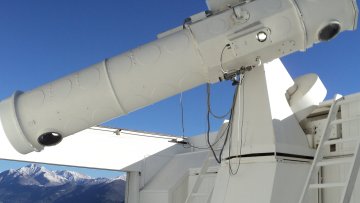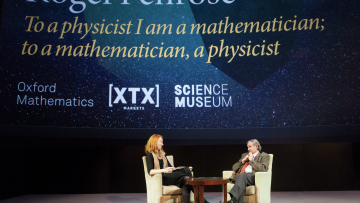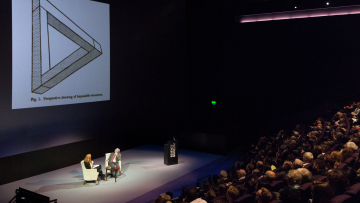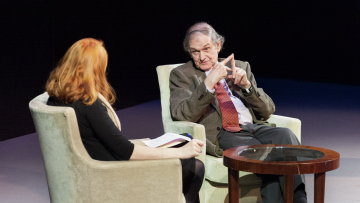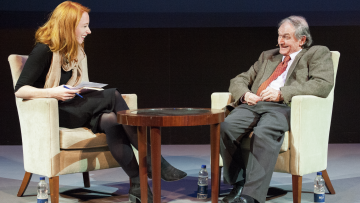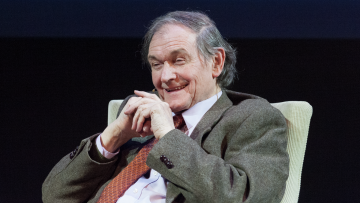Light scattering by atmospheric ice crystals - a hybrid numerical-asymptotic approach
Abstract
Accurate simulation of electromagnetic scattering by ice crystals in clouds is an important problem in atmospheric physics, with single scattering results feeding directly into the radiative transfer models used to predict long-term climate behaviour. The problem is challenging for numerical simulation methods because the ice crystals in a given cloud can be extremely varied in size and shape, sometimes exhibiting fractal-like geometrical characteristics and sometimes being many hundreds or thousands of wavelengths in diameter. In this talk I will focus on the latter "high-frequency" issue, describing a hybrid numerical-asymptotic boundary element method for the simplified problem of acoustic scattering by penetrable convex polygons, where high frequency asymptotic information is used to build a numerical approximation space capable of achieving fixed accuracy of approximation with frequency-independent computational cost.
Some Problems On Harmonic Maps from $\mathbb{B}^3$ to $\mathbb{S}^2$
Abstract
Harmonic map equations are an elliptic PDE system arising from the
minimisation problem of Dirichlet energies between two manifolds. In
this talk we present some some recent works concerning the symmetry
and stability of harmonic maps. We construct a new family of
''twisting'' examples of harmonic maps and discuss the existence,
uniqueness and regularity issues. In particular, we characterise of
singularities of minimising general axially symmetric harmonic maps,
and construct non-minimising general axially symmetric harmonic maps
with arbitrary 0- or 1-dimensional singular sets on the symmetry axis.
Moreover, we prove the stability of harmonic maps from $\mathbb{B}^3$
to $\mathbb{S}^2$ under $W^{1,p}$-perturbations of boundary data, for
$p \geq 2$. The stability fails for $p <2$ due to Almgren--Lieb and
Mazowiecka--Strzelecki.
(Joint work with Prof. Robert M. Hardt.)
Mathematrix lunches - Joined with Mirzakhani society
Abstract
This week is a women's only week in which we are joined by the Mirzakhani society, the society for undergraduate women in maths, for lunch.
Mathematrics - Panel discussion on balancing academia and family
Abstract
We are very excited to have another session with invited speakers joining us for the lunch next week. Annika Heckel, Frances Kirwan and Marc Lackenby will all be joining us for a panel discussion on balancing family with academia. All are welcome to join us and to ask questions.
We hope to see many of you at the lunch - Monday 1-2pm Quillen Room (N3.12).
The Sun has been emitting light and illuminating the Earth for more than four billion years. By analyzing the properties of solar light we can infer a wealth of information about what happens on the Sun. A particularly fascinating (and often overlooked) property of light is its polarization state, which characterizes the orientation of the oscillation in a transverse wave. By measuring light polarization, we can gather precious information about the physical conditions of the solar atmosphere and the magnetic fields present therein.
11th Oxford Princeton Workshop on Financial Mathematics and Stochastic Analysis
Abstract
The Oxford-Princeton Workshops on Financial Mathematics & Stochastic Analysis have been held approximately every eighteen months since 2002, alternately in Princeton and Oxford. They bring together leading groups of researchers in, primarily, mathematical and computational finance from Oxford University and Princeton University to collaborate and interact. The series is organized by the Oxford Mathematical and Computational Finance Group, and at Princeton by the Department of Operations Research and Financial Engineering and the Bendheim Center for Finance.
14:15
Generalisations of the (Pin,osp(1|2)) Howe duality
Abstract
The classical Dirac operator is part of an osp(1|2) realisation inside the Weyl-Clifford algebra which is Pin-invariant. This leads to a multiplicity-free decomposition of the space of spinor-valued polynomials in irreducible modules for this Howe dual pair. In this talk we review an abstract generalisation A of the Weyl algebra that retains a realisation of osp(1|2) and we determine its centraliser algebra explicitly. For the special case where A is a rational Cherednik algebra, the centralizer algebra provides a refinement of the previous decomposition whose analogue was no longer irreducible in general. As an example, for the group S3 in specific, we will examine the finite-dimensional irreducible modules of the centraliser algebra.


